The Cold Email Masterclass
Lesson 8
Expert Sessions
Laura Lopuch
As a litigation paralegal, a large part of Laura Lopuch’s job was to “get people to do stuff that they really didn’t want to do,” ranging from hunting down documents to rounding up witnesses to support their case. That experience came in extremely handy when launching her next career.
When she decided to venture out into helping SaaS companies and startups with their emails, Laura sent out over 300 cold emails, and within a few months her business has skyrocketed by 1,400%. She states, “My calendar was suddenly full and at the end, one of those cold emails ended up earning $20,000 in revenue when it was all said and done.”
Laura knows first-hand that cold emailing can work and lead to lucrative opportunities, but only when they’re done right.
#1: Focus on Your Audience
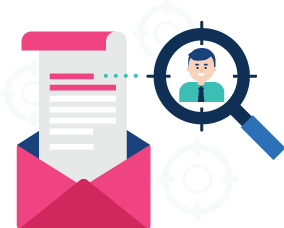
Make the majority of your cold emails about the client, and talk about yourself last. The more your clients see themselves in your emails and see how your services can help their specific problems, the more likely they are to see the value of what you’re offering.
When Laura writes cold emails, she waits until almost the very end to talk about herself. She researched the tech and SaaS companies she wanted to work with and used highly relevant information or case studies to get them interested in her services. Her focus was entirely on her audience, and the “winning sauce”—as she calls it—earned a 56% open rate and 9% positive reply rate.
#2: Choose Just One Goal

Don’t confuse your audience by including too many goals within a single email. Don’t ask them to follow you on Twitter, read your blog, and work with you all in one correspondence.
But it’s not just about the confusion factor. Laura says, “Every email should have one goal, otherwise it’s hard to measure success or failure. It’s much easier to figure out the solution to fix that failure if your email has one goal.”
#3: Get Strategic About Email Opens

Overcome the biggest obstacle in cold emailing by getting them to open it in the first place.
Laura encourages everyone to look at the ‘From name’, as a lot of people are reading emails directly from their smartphones. “You’re scanning through names to see if you recognize anyone,” shares Laura. If your ‘From Name’ looks like spam or not from a real person, it’s less likely to get read.
Try testing your send name or using a naming convention like “Laura from (Company Name)” to add a human touch to your business.
#4: Focus on the Right Headlines and Subject Heading
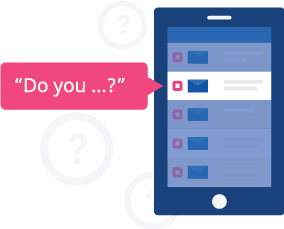
In order to get your reader’s attention, the subject heading or headline of your email should be highly relevant to their needs. If you’re too vague or focus too much on yourself right from the start, the reader is unlikely to open the email (or really care what you have to say).
Laura also suggests using a question in the subject heading to grab attention. “People love to answer questions. We have this innate desire to answer a question. If it’s in the subject line, that really piques the curiosity and makes you want to open that email.”
#5: Weave Storytelling Into Your Emails
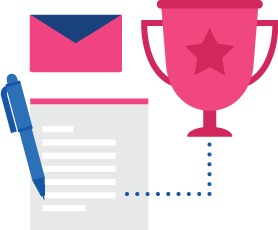
Help connect with your clients or audience by focusing on storytelling in your cold emails. Laura sees stories as the fabric of our lives. “When you see a friend you haven’t seen in a couple of months, the first question you ask is how are you and what you have been up to. You want to hear the stories of what they’ve been up to.”
“Start thinking about how you can sell or pitch your service using the stories of your successful customers. For example, you could tell the story of the last successful customer that you helped. You could tell a story of last client worked with had 10,000 new leads because of the work that you did with them.”
#6: Focus on Persuasion in Emails
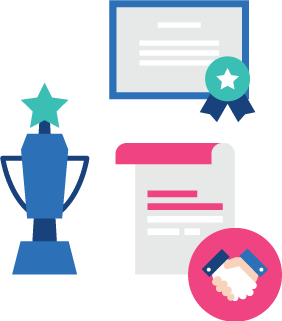
There’s another benefit to using storytelling in your cold emails. It has “baked in social proof” when you talk about how you helped a past client or competitor. Your reader becomes engaged in the story and gets to see a glimpse of your personality, while seeing who you’ve worked with.
It’s essentially a “humble brag” that draws your reader into your track record for success, without coming right out and giving them a laundry list of your accomplishments.
#7: Figure Out Who Your Number One Reader Is

Figure out who that one person in your audience is that always loves the stuff that you’re working on, and write your emails directly to that person. When you know who your ideal, number-one fan is, you already have an understanding of what they like and what they’ll respond to.
Gilles DC
As a growth marketer with a focus on scaling the sales process, Gilles relies on a combination of sales automation and the human touch to help build, scale and sustain his business relationships. And although he credits that human touch with actually building trust in his customer relationships, he uses automation to help segment his cold email lists and streamline the process.
For example, when he’s targeting SaaS founders, his emails are all likely to have a similar vibe. But when he expands outwards – say, to accountants – he repurposes the same cold email content, but uses different positioning to target the new audience.
#1: Offer Value

First and foremost, offer value to entice customers to trust you and build a relationship with you. You can do that in the very first email you ever send, but make sure it’s worth their while. Gilles suggests that one cost-effective way to do this is to invite them to an exclusive Facebook group where like-minded business owners can come for advice and valuable information.
As Gilles says, “The best chance to make it through the noise is to ask them not to invest more time and energy, but give something of value.” Remember, this email can be your only chance to make a good first impression. You need to plant a seed of value to grow the relationship and start to build trust.
At the end of the day, Gilles sees cold emailing as a trust-building opportunity that can help you compete in a saturated sales market. When your sales prospect feels like you know and understand them, they’re more likely to respond to your cold emails.
#2: Know Your Audience

It’s not enough to have a valuable product that you think everyone wants. In reality, your audience dictates what is valuable to them.
Figure out what you can offer that’s highly relevant and valuable by doing deep research on your audience. For example, a software company might jump on a case study on how your product helped sell more products in their industry. The more specific you can get with the value you’re offering, the easier it is to attract like-minded customers.
Gilles says once you’ve established value, you can develop a one-on-one approach with them to make them feel like you’re solving their problems. From here, you can send more blog posts, invite them to a webinar, or onboard them into a private Facebook Group.
#3: Switch to Human Mode
Automation is key to scaling relationships and outreach, but isn’t the way to actually build a relationship. Switch to human mode when building relationships from the start. Use automation to enable yourself to talk to as many people as possible and scale your reach, but don’t forget about the human touch required to nurture these new relationships.
#4: Segment Your Lists
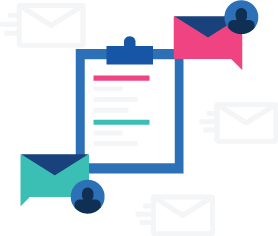
Without segmentation, you don’t have the right personalization. Reduce the challenges involved in personalizing the outreach automation process by segmenting your list well.
The thousands of “hellos” you’re sending will be mostly the same, but you still personalize the process by tightly segmenting your lists. What you send a software company should be unique from the cold email campaign you send a Fortune 500 company. They require a different value proposition, approach, and personalization.
#5: Use the Right Language

Part of the segmentation and personalization process is using the right language when addressing your ideal customer. Founders of a startup are more likely to respond to a casual approach and language like, “What’s up?” or “Cheers!” than an accounting company. In the latter case, using more formal language signals a level of professionalism.
Nail down the right language by doing research on LinkedIn or visiting prospects’ company websites and blogs to get a sense of their style and language. From there, Gilles encourages using the right tool, like MailShake, to segment your list into different personas, based on their business, personality, and the language you’re using to help automate the cold email process.
#6: Rely on Empathy
Use empathy and put yourself in your audience’s shoes to figure out what they value, how they talk, and what they want to hear about. Getting into this mindset can help increase your open rates and quickly build trust and credibility with your audience.
#7: Be Unexpected
Be unexpected and infuse more humor in your cold email outreach. “Using humor works very well for me” says Gilles. People get generic emails all day long. For them to read your email and respond, Gilles recommends putting in a GIF or meme (audience depending, of course). If you give people something to laugh about, they’re more likely to engage with you.
Heather Morgan
Former economist and founder of Salesfolk, Heather Morgan helps B2B sales, marketing and founders create better emails. Heather has been doing cold email since before she knew it was even called a cold email.
Today, she’s setup 550 cold email campaigns for companies who earn a 15% to 35% positive response rates.
#1: Add Value by Answering the Question “Why?”
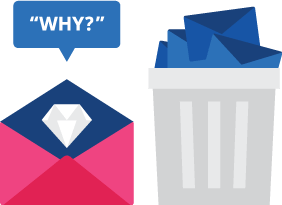
Before you send your next cold email, ask yourself why anyone should actually open and respond to your email. You may think you have a fantastic product or company, but these people don’t know you or your business.
“Make them care by being thoughtful and offering value,” Heather says. “On average, less than 4 out of 100 B2B sales emails actually get a response. Why is it so low? A lot of times the results are low because people are spamming out garbage that are generic or untargeted and don’t’ add much value or are boring.”
#2: Know Your Buyer Persona
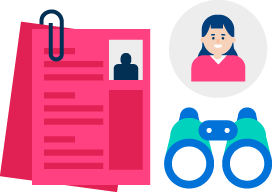
Know your audience and buyer personas by narrowing them down as tightly as possible and talk about them instead of yourself. Heather sees people sending out untargeted, generic emails – even big enterprises will say their buyer persona is “marketers”.
That’s too generic. Instead, you need a narrower focus that encompasses job title, company size, industry and more. Heather likes to “e-stalk” potential customers on LinkedIn, Twitter and other social sites to look at keywords, tone, pain points, fears, and thinking about what influencers like to share. She takes all of the research and information she gathers and focuses on talking about her audience and buyer persona in her cold emails, instead of just herself.
#3: Stand Out in Your Subject Heading
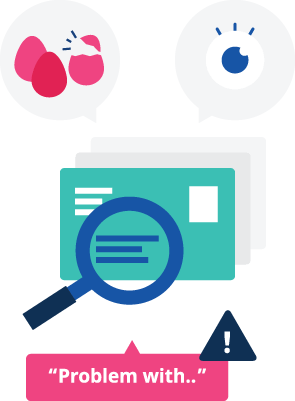
Getting a cold audience to open your emails requires a unique or outstanding subject line – typically, one that offers immediate value or points out a problem.
But Heather’s favorite way to get noticed in an email subject is to be weird and surprise them, while still relating to the email body. One of her most popular subject headings included, “11 chicken eggs” and “Eyeballs” to entice potential B2B clients to open and read.
Fear can also be effective in getting a higher open rate, but Heather warns to be careful and not to piss prospects off by misleading or tricking them. Instead, consider a subject heading like, “Issue with (company) purchase” or “Problem with (company) site.”
#4: Keep It Simple

Keep your email simple and focused in order to make them more effective. Heather recommends that, if you can say it in a way that’s simpler or shorter, you should do so.
Try to replace jargon with everyday language that everyone can understand. Think about how you’d explain the product or business to your grandmother or to a 10-year-old to simplify your language.
“You need to earn their attention to read the email, and you need to earn their response,” says Heather. “The more simple and short it is, the better it is and the more they’re going to remember the email.”
#5: Use the Right Lingo
That said, if you’re targeting a specific industry or client and know the lingo, use it to help them relate and start the trust-building process. Use relevant lingo from the buyer persona you created based on deep online research.
Just be careful to keep it less about proving you know the right jargon and more about talking to your ideal customers in the language they already use.
#6: Think About How Your Client Dresses For Work

Here’s a fun trick from Heather: Get a clearer image of your client’s personality and needs by imaging how they dress for work.
If they’re wearing a suit and tie and getting ready for a meeting, they likely require a more formal approach to cold emailing. Meanwhile, the clients wearing workout gear or T-shirts to work are unlikely to respond to formal language and expect to be addressed professionally, yet casually.
Lianna Patch
Cold emails can feel, well, cold and lifeless. When handled haphazardly, they also tend to lack substance and personality. Conversion copywriter and comedian Lianna Patch noticed this too, seeing a huge need for ecommerce and SaaS companies to punch up their emails by blending business sensibilities with humor.
“I’ve always gotten a good response from it. The first thing I started writing with humor was a weekly fashion round-up on Etsy.” Lianna started making fun of her round-up and got a good response from her audience. “Even back then, I felt there was something to this.” As she started honing her chops as a writer, she also started doing open mic comedy and taking improv classes and realized this could be her entire focus. “It seemed to good to be true,” Lianna says.
#1: Do Your Humor Research
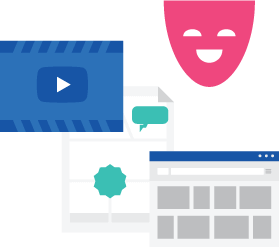
Lianna admits it’s tricky to do research about humor into what your prospects thinks are funny, but it is possible. She focuses on what shows they watch and find funny, what their favorite comic strips were as a kid, and what their favorite comedy movies and stand-ups are now to get a sense of the style that resonates best with them.
Then, she looks for places to strategically use humor as a tool, whether for building trust or alleviating tension. “Humor can build trust and make them believe I’m a real person and not a robot copying and pasting this stuff.”
#2: Start Slowly and A/B Test Your Humor
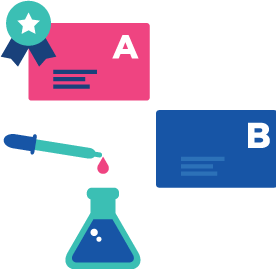
Lianna cautions that if you’re new to humor writing, you need to take it slowly and A/B test whenever possible. “Don’t go balls to the wall with humor. Test a funny subject line first, especially if you have the opportunity to A/B test.”
She suggests starting out with a joke in the subject line and wrapping it up in the email. You can also do this in your P.S. once you’ve warmed them up and built some rapport and trust in the email.
I’ve used this in my own cold emails and found that infusing some humor at the end seemed to work better than the subject heading. Our audience liked the line, “It’s not like building a business is rocket science. It’s harder.”
#3: Know When to Draw the Line

Stop and ask yourself where the line is with your own audience. Lianna drops “F bombs” in her emails and blog because that’s how she talks in real life. And a lot of her clients are also open to speaking frankly and using a mix of swear words. But there should be a purpose with using colorful language. “My aim is never to offend anybody,” Lianna says.
Her clients also have their own lines. Some are weary of swearing, or don’t want to use silly GIFs. To make sure everyone is on the same page, Lianna sends along a sample to pinpoint what kind of tone and humor to use to make sure her clients are comfortable with the copy before writing up a series.
#4: Use Humor to Build Trust
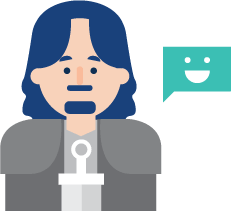
The real purpose to using humor in emails is to stand out while building trust. For example, when Lianna writes to a group of tech leaders in software companies, she knows they’re likely to watch Game of Thrones and can throw in those examples to pepper her content with email.
The goal isn’t to excluded people with weird and hard-to-understand references. But the results can be huge when you reference the right person. “When the person who was supposed to get that sees it, they think ‘oh this is just for me’ and it builds that trust.”
#5: Delight Your Readers
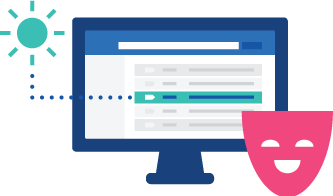
Take the time to consider what your customers are seeing in their inbox over and over again. It’s probably the same type of pitches and relatively dry copy. But humor affords the opportunity to really stand out.
“My goal is to make people stand out in the inbox. I want to be the most delightful thing that you read so that you’ll remember me.” Even a simple check-in email can include a fun GIF to infuse some humor and brighten up your audience’s day.
#6: Stand Out in a Dry Industry

Lianna sees companies in normally humorless industries like SaaS making the mistake of approaching their emails in a way that’s cold and impersonal, then expecting a reaction. Lianna says they’re missing out on a chance to use humor as a shortcut to building a rapport and a connection. “If you’re in a niche where everyone is dry, that’s your opportunity to stand out.”
Lianna has seen this first-hand with a client that sells storm water compliance and reporting monitoring software. “They really wanted to brand themselves as out there and weird and funny.” And their efforts paid off. The founder reported that people were coming up to him at an industry conference and asking if he writes those stormwater compliance emails. If humor can change an industry like storm compliance and reporting, anything is possible.
According to Lianna, “Humor can save the world.”
Steli Efti
You might have noticed from all the references to his work throughout this guide, but I’m a big fan of Steli Efti, the co-founder of Close.io. Steli helps small and medium sized businesses and inside sales to put out more calls and emails, as well as to open and close more deals.
#1: Focus on the User Experience
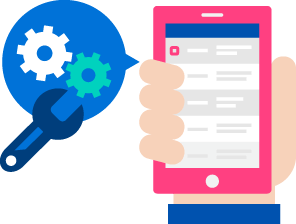
Product development and cold emailing has more in common than you’d think. To successfully send cold emails, you need to start thinking about the user experience. “If you think about email like you think about product development and the user experience, that philosophy is really the foundation for everything I do in my outreach.”
That’s why Steli takes the time to think about who the person is that’s receiving the email, what their inbox looks like, and what their experience looks like. He strategizes exactly how to structure the entire email, while engaging his audience – without being deceptive.
Steli also knows that anything he writes should be worth reading. “At the end of that email, I want the person to appreciate how different it sounds and feels.” He credits his ability to do this to a business process through which he puts himself in the position of every person he’s trying to meet.
#2: Know Your Competition

It’s not enough to just understand your customer. You also need to understand who your competition is. This is where Steli sees a lot of sales reps going wrong. “Where people always fail is not understanding the person they’re trying to reach or who they’re competing with.”
A more successful cold email Steli received recently came from a web developer that acknowledged he must get hundreds of emails and just deletes them. He asked for just three sentences to make his point, and it impressed Steli enough to keep reading. That web developer understood exactly what his competitors were doing and used authenticity and empathy to stand out.
#3: Let Customers Educate You

Instead of jumping immediately into your pitch, take one moment to thank them for responding and ask, out of curiosity, what made them want to engage with you. Steli says you can go directly to your customers or sales prospects to educate you on what works and what doesn’t. That includes both the good and bad to your cold emails and pitches.
“Don’t just sell, learn how to improve the way you sell, and learn it from your customers and prospects.” The people you’re messaging will give you a tremendous amount of insight into the best ways to structure your cold emails. You just have to ask.
#4: Use a Single Call to Action

Not using a CTA at all can negatively impact your cold emails, but so can using too many. Steli says too many cold emails leave the reader hanging or leave it open-ended. Alternatively, he sees how complicated people make emails by asking for too many things at once.
Don’t ask your reader to watch your video, click on a link to sign-up for something, visit your website, onboard for a free trial, or schedule a call – all in the same email. “Give me one simple, clearly defined call to action that makes sense for me, not just for you”
Think of your cold email CTA as a way to convince your prospect way to hop on a call with you. “Sell me on how much time the call is going to take and why it’s supposed to be worth your time.” Steli suggests giving one or two times someone can say yes to, instead of leaving it open ended and making them scramble to find a day and time to call you.
#5: Follow Up Forever
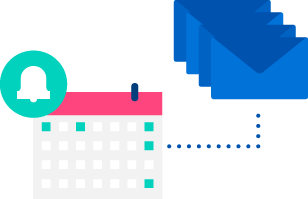
Following up forever can turn a cold prospect into a paying client, but only if you do it right. Steli says if he has some kind of connection, exchange, or engagement with someone, he will generally follow-up indefinitely until he gets some kind of response. Meanwhile, your competition is likely to quit and fade away after just a handful of emails. Steli’s customers have seen results as far down the line as the 17th or 23rd follow up email.
You can also use a 1-2-3 approach to reduce friction. Your prospect might be busy, waiting for a decision maker, or just uninterested, and feel friction about responding to your email. Steli ends this friction by giving them three options where the CTA is to hit reply and type one of the numbers.
The first might be that you know the person is busy and wants you to follow-up by a certain date, another is that they’re uninterested and never will be, and the third infuses some humor. In this case, Steli might ask if they’ve fallen down the stairs and need someone to call an ambulance because they can’t reach their phone. It grabs their attention without being intrusive.
At the end of the day, it’s about the customer and what they need – not about you. Steli shares, “The whole world doesn’t revolve around you. It’s your job to check in with them and increase the chances the timing is going to be right.”
Talia Wolf
Talia is a long-time conversion optimization specialist who helps businesses optimize their entire customer journey in order to create better experiences and grow their company. She’s found success by focusing primarily on emotional targeting and persuasion.
Talia also teaches online courses to help you tap into your customers’ minds and figure out what they want in order to create those experiences for them.
#1: Use Emotion to Fix the Leaks
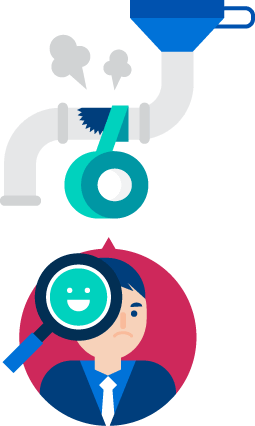
Talia recommends testing your results and getting down to the emotional root of your customer’s journey to increase your conversions. But it takes a well-defined strategy to find the leaks.
At first, Talia tested random elements like CTA buttons, web copy and anything else she came across. After finding leaks in her funnels, she could identify the issues, but didn’t know how to fix them. Even though she devoured blog posts and resources on the topic, she noticed that all recommended solutions were based on someone’s opinion or intuition – and the results were disappointing at best.
As she was looking for a substantial, scalable way to optimize what she was doing on her ads, emails, landing pages, ecommerce flows, websites and more, Talia realized that it all came back to emotion. “Emotional targeting is the framework that I built that focuses on why people buy,” she says. “At the end of the day, the root of every conversion is our decision making process. If you can tap into why people make decisions, what makes people buy, essentially you can create a better experience for them.”
#2: Focus on the Conversion Goal

It takes more than obsessing over your open rate or click-through to increase conversions. And that goal should all tie into what your customers’ emotions and what they want. “You’re not the hero, your customer is.” No one cares about pictures or awards. What they care about is what’s in it for them and the actual value that they get from your product or service.
This is also how Talia stands out in a competitive landscape. She does intense research to figure out the pain her customers are experiencing and how to solve it. Focus on the pain points of your own customers and obsess over how you can solve it and show that back to them in your emails, copy, and anywhere else your customers might land.
#3: Ask Your Customers Tough Questions
Instead of assuming what your customers want, go out and ask them. “The amount of people that are making assumptions about their customers is mind boggling.” And it’s also relatively easy to fix. Go out and do customer surveys and interviews and ask your customers tough questions about the things that matter to truly get into their heads and discover what motivates them to buy.
#4: Research What Your Competitors are Doing
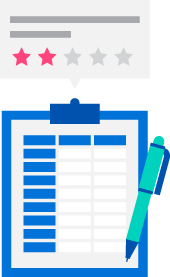
Figuring out why customers are buying from your competitors can shed light on your customers’ pain points and motivations. “I go onto the competitors’ websites and look at reviews and testimonials. I only care about that.” Talia doesn’t look at anything else, instead focusing on why those people are buying from them. “These are prospects that should be buying from you that are buying from your competitors”
Take all of that information about your competitors and plug it into a spreadsheet. Talia copies and pastes her competitors’ reviews to see what annoys them and frustrates them, as well as what’s amazing to them. From there, you can comb through the data to see what similarities stand out and can inform your understanding of your customers’ needs.
#5: Let Your Clients Write the Copy
Your clients are already telling you what they care about and are giving you the exact language you should be using in your emails and web copy. Study your customer surveys, notes from phone calls, and customer reviews to figure out the language you can draw out to help craft copy that converts. Doing so can help reduce your time spent writing (and make your life simpler in the process).
#6: Stay Authentic
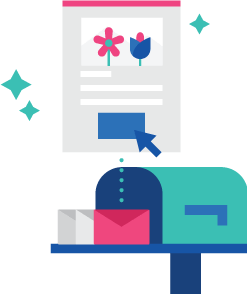
As you piece together what your clients want from you, it’s also important to stay authentic during your touch points. Talia sends personal emails to her subscribers and thinks about what it will look like before she ever writes it – from the colors to the images. She also thinks about the one thing she wants her readers to get out of her email and works backwards. “What is that one thing that’s going to lead to that goal?”
That’s just one piece to the puzzle, according to Talia. It’s also important to stay authentic and, when appropriate, use casual and personable language so that people will want to keep opening them and reading every week. Give your audience a reason to read and a single CTA you can mention several times if you need to, depending on the length of your copy.
#7: Grab Their Attention and Convert
Studies show customers will go elsewhere if a website loads in more than 3 seconds. Talia points out that loading time is a technical thing, but also a cognitive thing. “If we don’t see what’s in it for us in 3 seconds, we’re out of there. It’s the same thing with an email. You need to grab their attention and give them a CTA immediately or it’s not going to convert.”
#8: Follow Up and Agitate Their Pain Points
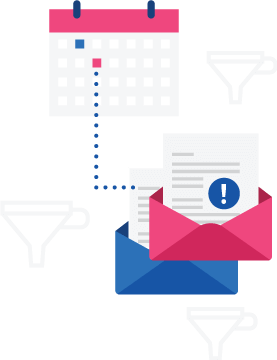
Make your follow up emails about persuading your readers to do something instead of just reminding them that you emailed them a few weeks ago. Asking your audience if they read your email at every follow- up won’t convert.
Keep the value and focus on the reader and keep agitating those pain points. Keep the focus and goals of your email consistent at every touch point, but figure out a new way to say it to see what’s going to convert.
That could mean doing new research on your customer, trying out a new tactic and A/B testing the results. It’s all about doing your homework – and doing it right.
